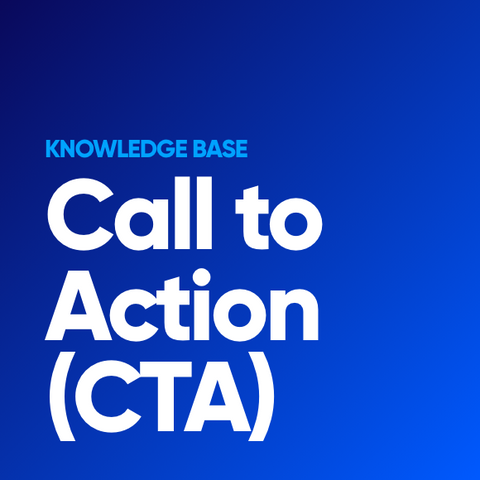The Art of the Call to Action (CTA): Prompting Audience Response for Dynamic Engagement
A powerful and essential element that can make the difference between passive observers and active participants exists—the Call to Action (CTA). A CTA isn't just a phrase; it's a dynamic prompt encouraging and guiding the audience to take a specific action. In this comprehensive exploration, we'll delve deep into the world of CTAs, uncover their significance, explore various strategies, and celebrate their pivotal role in the dynamic field of digital marketing.
Unveiling the Essence of CTAs
At its core, a CTA is a dynamic and compelling piece of content, often a phrase or a button, designed to motivate the audience to engage further or take a specific action. The essence of CTAs lies in their ability to transform passive viewers into dynamic participants, driving them to perform actions that align with the marketer's objectives.
Why are CTAs so important?
The beauty of CTAs lies in their ability to make the audience dynamic and responsive. In the world of digital marketing, where competition for attention is fierce, an effective CTA can be the dynamic key to converting potential customers and achieving campaign objectives.
Decoding the Significance
The significance of CTAs in the realm of digital marketing cannot be overstated:
-
Audience Engagement: CTAs are the dynamic catalyst for audience engagement, encouraging them to actively interact with content and brands.
-
Conversion Boost: Effective CTAs often lead to dynamic conversion rate improvements, as they guide users towards desired actions, such as making a purchase, signing up, or downloading.
-
Clear Direction: CTAs provide a dynamic and clear direction, eliminating ambiguity and helping users understand what action to take next.
-
Campaign Objectives: CTAs play a dynamic role in achieving campaign objectives, aligning user actions with the marketer's goals.
-
Measurable Success: The dynamic nature of CTAs allows for measurable success, as the actions they prompt can be tracked and analyzed for effectiveness.
Strategies for Effective CTAs
To fully harness the power of CTAs, consider these high-impact strategies:
-
Clear and Compelling Language: Use dynamic and clear language in CTAs. The text should be concise, action-oriented, and resonate with the target audience.
-
Visibility and Placement: Make CTAs visually dynamic and prominent, placing them strategically in high-traffic areas where the audience's attention is naturally drawn.
-
Design and Color: Ensure that CTAs are dynamically designed and use colors that stand out from the rest of the content, making them easily noticeable.
-
A/B Testing: Conduct dynamic A/B testing to optimize CTAs. Test text variations, design, and placement to determine the most effective.
-
Consistency: Maintain dynamic consistency between the CTA and its prompt action. Ensure that users receive what they expect when they click on a CTA.
Celebrating the Impact of CTAs
The impact of CTAs in the realm of digital marketing is nothing short of transformational:
-
Audience Engagement: CTAs are dynamic engagement tools encourage audiences to participate actively with content and brands.
-
Conversion Enhancement: Effective CTAs dynamically enhance conversion rates, turning passive viewers into active customers.
-
Clear Direction: CTAs provide a dynamic and clear direction, eliminating confusion and guiding users toward specific actions.
-
Campaign Achievement: They play a dynamic role in achieving campaign objectives, aligning user actions with the marketer's goals.
-
Measurable Success: CTAs offer dynamic and measurable success, allowing marketers to track the impact of their campaigns and optimize for the best results.
CTAs Across Diverse Industries
CTAs are a versatile tool applicable to a wide array of industries:
-
E-commerce: Online retailers use CTAs for dynamic purposes such as "Buy Now," "Add to Cart," or "Shop Now" to guide users toward making purchases.
-
B2B Services: B2B companies employ CTAs to prompt dynamic actions such as "Request a Quote," "Contact Us," or "Download Whitepaper."
-
Healthcare: Healthcare providers use CTAs like "Schedule an Appointment," "Find a Doctor," or "Get a Free Consultation" to engage patients and encourage appointments.
-
Finance: In the financial sector, companies use CTAs such as "Apply Now," "Get a Quote," or "Calculate Your Savings" to prompt users to take specific financial actions.
-
Education: Educational institutions leverage CTAs such as "Apply Now," "Request Information," or "Explore Programs" to engage prospective students and guide them through the enrollment process.
The Future of CTAs
As the ever-evolving world of digital marketing continues to evolve, the future of CTAs is filled with exciting possibilities:
-
Dynamic Personalization: CTAs will embrace dynamic personalization, offering tailored prompts based on user preferences and behavior.
-
Interactive CTAs: The future will see dynamic interactive CTAs that allow users to engage more directly with content, such as submitting feedback, taking surveys, or dynamic product customization.
-
AI-Enhanced CTAs: CTAs will integrate dynamic artificial intelligence for real-time optimization, tailoring the prompt to the user's dynamic interests and behavior.
The Prompt to Action
CTAs are the dynamic prompt to action. They empower marketers to transform passive audiences into dynamic participants, guiding them to take specific actions that align with campaign objectives. By embracing the dynamic power of CTAs, you can ensure that your content and campaigns not only attract attention but also drive dynamic and measurable engagement. CTAs aren't just words or buttons; they're the dynamic bridge between your audience's interest and your campaign's success.

Call to Action (CTA)





